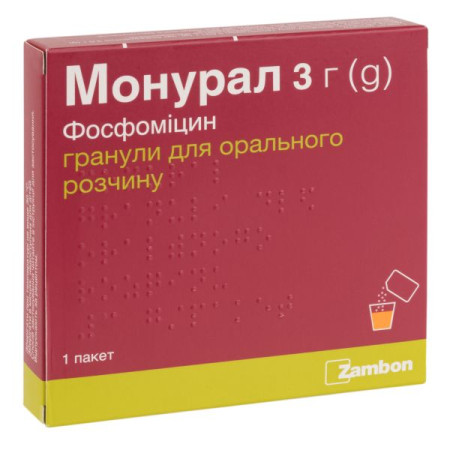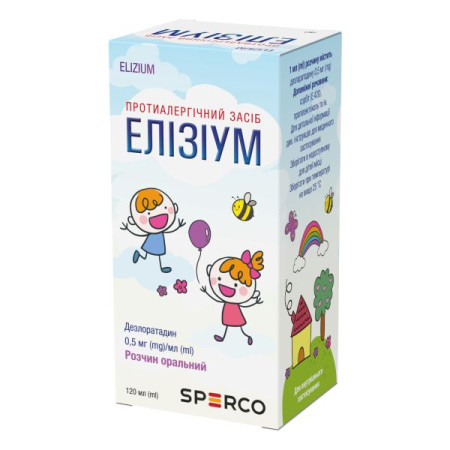Desloratadine tablets 5 mg No. 10

Instructions Desloratadine tablets 5 mg No. 10
Composition
active ingredient: desloratadine;
1 film-coated tablet contains desloratadine 5 mg;
excipients: microcrystalline cellulose, pregelatinized starch (corn), mannitol (E 421), talc, magnesium stearate, hypromellose 6 mPa.s (E 464)*, titanium dioxide (E 171)*, macrogol 6000 (E 1521)*, indigo carmine aluminum lake (E 132)*.
*as part of the Opadry Blue 03F20404 film coating.
Dosage form
Film-coated tablets.
Main physicochemical properties: blue round, 6 mm in diameter, biconvex tablets, film-coated, embossed with “LT” on one side.
Pharmacotherapeutic group
Antihistamines for systemic use.
ATX code R06A X27.
Pharmacological properties
Pharmacodynamics.
Mechanism of action: Desloratadine is a long-acting, non-sedating antihistamine with selective peripheral H1-receptor antagonist activity. After oral administration, desloratadine selectively blocks peripheral H1-histamine receptors because it does not penetrate the central nervous system well.
In vitro studies have shown anti-allergic and anti-inflammatory properties, including inhibition of the release of pro-inflammatory cytokines such as IL-4, IL-6, IL-8, and IL-13 from human mast cells/basophils, and inhibition of the expression of adhesion molecules such as P-selectin in endothelial cells. The clinical relevance of these observations remains to be confirmed.
Clinical efficacy and safety: In a multiple-dose clinical study, desloratadine was administered daily for 14 days at doses up to 20 mg, with no statistically or clinically significant changes in cardiovascular events. In a clinical pharmacology study, desloratadine was administered at a dose of 45 mg/day (9 times the daily clinical dose) for 10 days, no prolongation of the QT interval was observed.
Desloratadine has little or no effect on the nervous system. In controlled clinical trials, the recommended dose of 5 mg/day did not cause drowsiness compared to placebo. In clinical trials, a single dose of 7.5 mg/day of desloratadine had no effect on psychomotor performance.
In patients with allergic rhinitis, desloratadine effectively relieved and controlled symptoms such as sneezing, nasal discharge and itching, itching and redness of the eyes, tearing, and itching of the palate for 24 hours.
The effectiveness of desloratadine tablets in adolescents aged 12–17 years has not been conclusively demonstrated in studies.
Desloratadine effectively alleviates the severity of seasonal allergic rhinitis, as evidenced by the total score of the Rhinoconjunctivitis Quality of Life Questionnaire. The greatest improvement was observed in the questionnaire items related to practical problems and daily activities that were limited by symptoms.
Chronic idiopathic urticaria has been studied as a clinical model for urticarial disorders because the mechanisms of development are the same regardless of etiology. Histamine release is a causative factor in all urticarial disorders, therefore desloratadine can effectively relieve the symptoms of all urticarial disorders, including chronic idiopathic urticaria.
In two 6-week placebo-controlled studies in patients with chronic idiopathic urticaria, desloratadine was effective in relieving pruritus and reducing the number and size of hives by the end of the first dosing interval. In each study, the effect was maintained throughout the 24-hour dosing interval. Itch relief of more than 50% was observed in 55% of patients receiving desloratadine compared with 19% of patients receiving placebo. Desloratadine treatment also significantly reduced the impact of the disease on sleep and daytime activity as measured by a four-point scale used to assess these changes.
Pharmacokinetics.
Absorption. Desloratadine plasma concentrations are determined 30 minutes after administration, the drug is well absorbed, the maximum concentration is reached after about 3 hours, the half-life is about 27 hours. The degree of cumulation of desloratadine corresponds to its half-life (about 27 hours) and the frequency of administration 1 time per day. The bioavailability of desloratadine is proportional to the dose in the range from 5 to 20 mg.
In a pharmacokinetic study in which the demographics of the patients were comparable to the general population with seasonal allergic rhinitis, 4% of the participants had higher desloratadine concentrations, which may vary depending on ethnicity. The maximum concentration of desloratadine after 7 hours was approximately 3 times higher, and the terminal half-life was approximately 89 hours. The safety profile in these patients did not differ from that in the general population.
Biotransformation. The enzyme responsible for the metabolism of desloratadine has not yet been identified, therefore some interactions with other drugs cannot be completely excluded. Desloratadine does not inhibit CYP3A4 in vivo, in vitro studies have shown that the drug does not inhibit CYP2D6 and is not a substrate or inhibitor of P-glycoprotein.
Conclusion: In a single-dose study of desloratadine 7.5 mg, food intake (a high-fat, high-calorie breakfast) did not affect the distribution of desloratadine. Grapefruit juice was also found to have no effect on the pharmacokinetics of desloratadine.
Patients with renal impairment: The pharmacokinetics of desloratadine in patients with chronic renal failure were compared to those in healthy subjects in one single-dose study and one multiple-dose study; in both studies, changes in exposure (AUC and Cmax) of desloratadine and 3-hydroxydesloratadine were not clinically significant.
Indication
Elimination of symptoms associated with:
allergic rhinitis (see section "Pharmacological properties");
urticaria (see section "Pharmacological properties").
Contraindication
Hypersensitivity to desloratadine, to any of the excipients of the drug or to loratadine.
Interaction with other medicinal products and other types of interactions
In clinical studies of desloratadine tablets when used concomitantly with erythromycin or ketoconazole, no clinically significant interactions were observed.
In clinical and pharmacological studies, when desloratadine tablets were used together with alcohol, no increase in the negative effects of ethanol was observed. However, in the post-marketing period, cases of alcohol intolerance and alcohol intoxication were observed during the use of the drug, so caution should be exercised when drinking alcohol during treatment with desloratadine.
Interaction studies have only been conducted in adult patients.
Application features
Desloratadine should be used with caution in patients with severe renal impairment.
Desloratadine should be used with caution in patients with a medical or family history of seizures and in children, who may be more susceptible to developing new seizures during treatment with desloratadine. The physician should consider discontinuing desloratadine in patients who experience a seizure while taking the drug.
Use during pregnancy or breastfeeding
Pregnancy. A large amount of data on the use of desloratadine during pregnancy (more than 1000 pregnancy outcomes) do not indicate teratogenic, fetotoxic or harmful effects on the fetus/newborn. Animal studies do not indicate direct or indirect harmful effects with respect to reproductive toxicity. As a precautionary measure, it is preferable to avoid the use of Desloratadine during pregnancy.
Breastfeeding. Desloratadine is excreted in human milk. The effects of desloratadine on newborns/infants are unknown. Breastfeeding women should be advised to decide whether to discontinue breast-feeding or to avoid the use of the drug, taking into account the benefit of breast-feeding for the child and the benefit of the drug for the mother.
Fertility: There are no data on the effects on male or female fertility.
Ability to influence reaction speed when driving vehicles or other mechanisms
Clinical trial data indicate that Desloratadine has no or negligible influence on the ability to drive or use machines. Patients should be advised that most people do not experience drowsiness. However, since there is individual variability in response to all drugs, it is recommended that patients refrain from engaging in activities that require mental alertness, such as driving or operating machinery, until they know how they react to the drug.
Method of administration and doses
Adults and children over 12 years of age: 1 tablet once daily, regardless of meals, for the relief of symptoms associated with allergic rhinitis (including intermittent and persistent allergic rhinitis) and urticaria.
Treatment of intermittent allergic rhinitis (presence of symptoms less than 4 days per week or less than 4 weeks) should be carried out taking into account the anamnesis: stop after the symptoms disappear and resume if they recur.
In case of persistent allergic rhinitis (presence of symptoms more than 4 days a week or more than 4 weeks), treatment should be continued throughout the entire period of contact with the allergen.
Children.
There are limited clinical trial data on the efficacy of desloratadine tablets in adolescents aged 12 to 17 years.
The efficacy and safety of desloratadine 5 mg film-coated tablets in children under 12 years of age have not been established.
Overdose
According to post-marketing data, the profile of adverse reactions associated with overdose was similar to that of therapeutic doses, but the severity of these signs was more severe.
Treatment: In case of overdose, standard measures should be taken to remove unabsorbed active substance, as well as symptomatic and supportive treatment. Desloratadine is not removed by hemodialysis, and its removal by peritoneal dialysis has not been established.
Symptoms: In clinical studies of multiple doses of desloratadine up to 45 mg (9 times the therapeutic dose), no clinically significant effects were observed.
Children: Based on post-marketing experience, the adverse reaction profile associated with overdose is similar to that observed at therapeutic doses, but the severity of symptoms may be more severe.
Side effects
Summary of the safety profile: In clinical trials in indications including allergic rhinitis and chronic idiopathic urticaria, adverse reactions were reported 3% more frequently in patients treated with desloratadine 5 mg/day than in patients treated with placebo. The most frequently reported adverse reactions compared to placebo were fatigue (1.2%), dry mouth (0.8%), and headache (0.6%).
Children: In clinical trials involving 578 children aged 12-17 years, the most common adverse reaction was headache, occurring in 5.9% of patients receiving desloratadine and 6.9% of patients receiving placebo.
Overall frequency of adverse reactions. Adverse reactions reported in clinical trials with a frequency higher than in the placebo group, as well as in the post-marketing period, are classified as follows: very common (≥1/10), common (≥1/100 to <1/10), uncommon (≥1/1000 to <1/100), rare (≥1/10000 to <1/1000), very rare (<1/10000), frequency unknown (cannot be estimated from the available data).
Metabolic and nutritional disorders: Frequency not known: increased appetite.
Psychiatric disorders: Very rare: hallucinations. Frequency not known: abnormal behaviour, aggression, depressed mood.
Nervous system disorders: Common: headache. Very rare: dizziness, drowsiness, insomnia, psychomotor hyperactivity, convulsions.
On the part of the organs of vision. Frequency unknown: dry eyes.
Cardiovascular system: Very rare: tachycardia, palpitations. Frequency unknown: QT prolongation, supraventricular tachyarrhythmia.
Gastrointestinal disorders: Common: dry mouth. Very rare: abdominal pain, nausea, vomiting, dyspepsia, diarrhea.
Hepatobiliary disorders: Very rare: increased liver enzymes, increased bilirubin, hepatitis. Frequency unknown: jaundice.
Musculoskeletal and connective tissue disorders: Very rare: myalgia.
Skin and subcutaneous tissue disorders: Frequency not known: photosensitivity.
General disorders: Common: fatigue. Very rare: hypersensitivity reactions (such as anaphylaxis, angioedema, dyspnoea, pruritus, rash and urticaria). Frequency not known: asthenia.
Investigations: Frequency not known: weight gain.
Children: Other adverse reactions reported in the post-marketing period (frequency unknown): QT prolongation, arrhythmia, bradycardia, behavioral disorders and aggression.
A retrospective observational safety study found an increased incidence of seizure onset in patients aged 0 to 19 years while taking desloratadine compared to periods when they were not receiving desloratadine.
Among children aged 0–4 years, the adjusted absolute increase was 37.5 (95% confidence interval (CI) 10.5–64.5) per 100,000 person-years, with a previous rate of new onset seizures of 80.3 per 100,000 person-years. Among patients aged 5–19 years, the adjusted absolute increase was 11.3 (95% CI 2.3–20.2) per 100,000 person-years, with a previous rate of 36.4 per 100,000 person-years.
Expiration date
3 years.
Storage conditions
The medicine does not require any special storage conditions. Keep out of the reach of children.
Packaging
10 tablets in a blister; 1 or 3 blisters in a cardboard box.
Vacation category
Without a prescription.
Producer
Actavis LTD.
Location of the manufacturer and address of its place of business
BLB015, BLB 016 Bulebel Industrial Building, Zeytun ZTN 3000, Malta.
There are no reviews for this product.
There are no reviews for this product, be the first to leave your review.
No questions about this product, be the first and ask your question.







